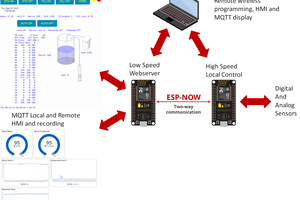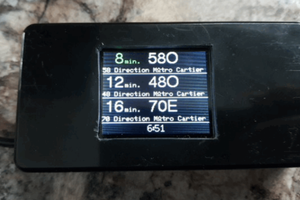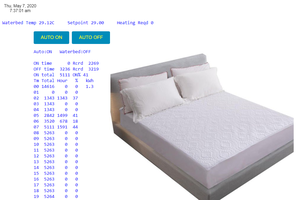In this video the squirrel jumps about 1.5 ft.
Previously tried rotating a tube feeder but high voltage is much better.
The platform feeder lets you see the birds better and the rotation sometimes sprayed seeds on the ground.
Stop feeding the squirrels and save on birdseed. Before the squirrels ate most of it.
For those who prefer to use a $5 Sonoff switch:
https://www.youtube.com/watch?v=lRCH67wfwNE
https://www.youtube.com/watch?v=scerfgdSjlo&list=PL8Udln1nmXVC6XPc0wQ8ofVkLHXbbAstR
"Hey Google. Zap the squirrel".
Update: Added DS3231 Real Time Clock and another relay to control a nearby fountain.
The RTC is used to turn ON and OFF the fence energizer and the fountain based on time in AUTO mode.
If AUTO mode is OFF the fence energizer and fountain can be turned ON or OFF manually.
RTC is also used to execute some code only once per second without using delays.
All my NodeMCU devices have RTCs. Default I2C connection is D1 and D2 to SCL and SDA on RTC.
Battery on RTC means power failures don't affect the controller time.
The date and time in the upper left of the web page HMI is coming from the RTC and only updates with a page refresh. The date and time below ZAP ON in the black font is coming from the internet and updates constantly.
Web page HMI is hosted on device for zero cost, zero I/O, high res, colourful display on phone, tablet or pc from anywhere on the same router using any browser. No app needed.
To display the web page HMI just put the local IP address of the NodeMCU device in any browser.
Web page HTML code is among the control code in Arduino IDE. Only web page address of the background JPEG is in the code not the JPEG file. Use client.println() instead of serial.println().
A wireless web page HMI is much better than an expensive, low res, monochrome LCD display only available wired near device.
UPDATE: New and improved metal version with easily removable lexan roof. Galvanized U channel from an old hot tub cover mounted with plastic fasteners. Two long, skinny trays means the bird's butt is usually over the edge so the seeds don't get contaminated. Plastic washers between the metal and horizontal wooden arms for electrical isolation. Damp wood in original design conducted a bit and lowered voltage available.
This design suits any size bird and allows great views, unlike tube feeders. The fence energizer deters any size animal from a chipmunk to a racoon.
BONUS FEATURE: Now when the squirrels get zapped they also get hit in the head when they leap up and hit the roof. Now they mostly avoid it.
Also small seeds built up under aluminum mesh. New design is easy to clean Just sweep seeds out the ends.
Edges also contain seeds. Every time a bird takes off it blows the seeds around a bit.
Also added lexan roof and ice-free Frisbee/birdbath https://hackaday.io/project/175937-the-ultimate-birdfeeder







 Chris
Chris
It doesn't harm them. Electric fences are used in a lot of places. They jump off but are back to try again in a few hours. "Ideal for containing pets and keeping out small nuisance animals". After a few tries it becomes primarily a deterrent. They keep away from it. Unlike other so-called squirrel-proof feeders where they keep trying and often succeed. The birdseed lasts a long time now. The squirrels eat whatever seed falls to the ground below.